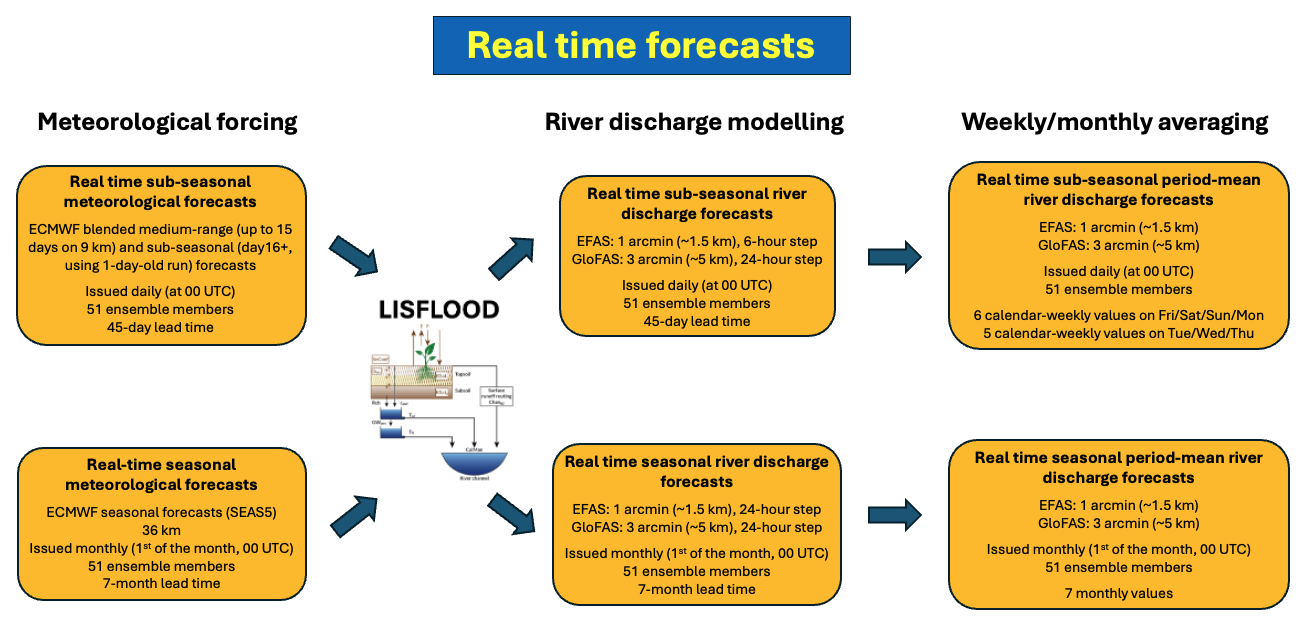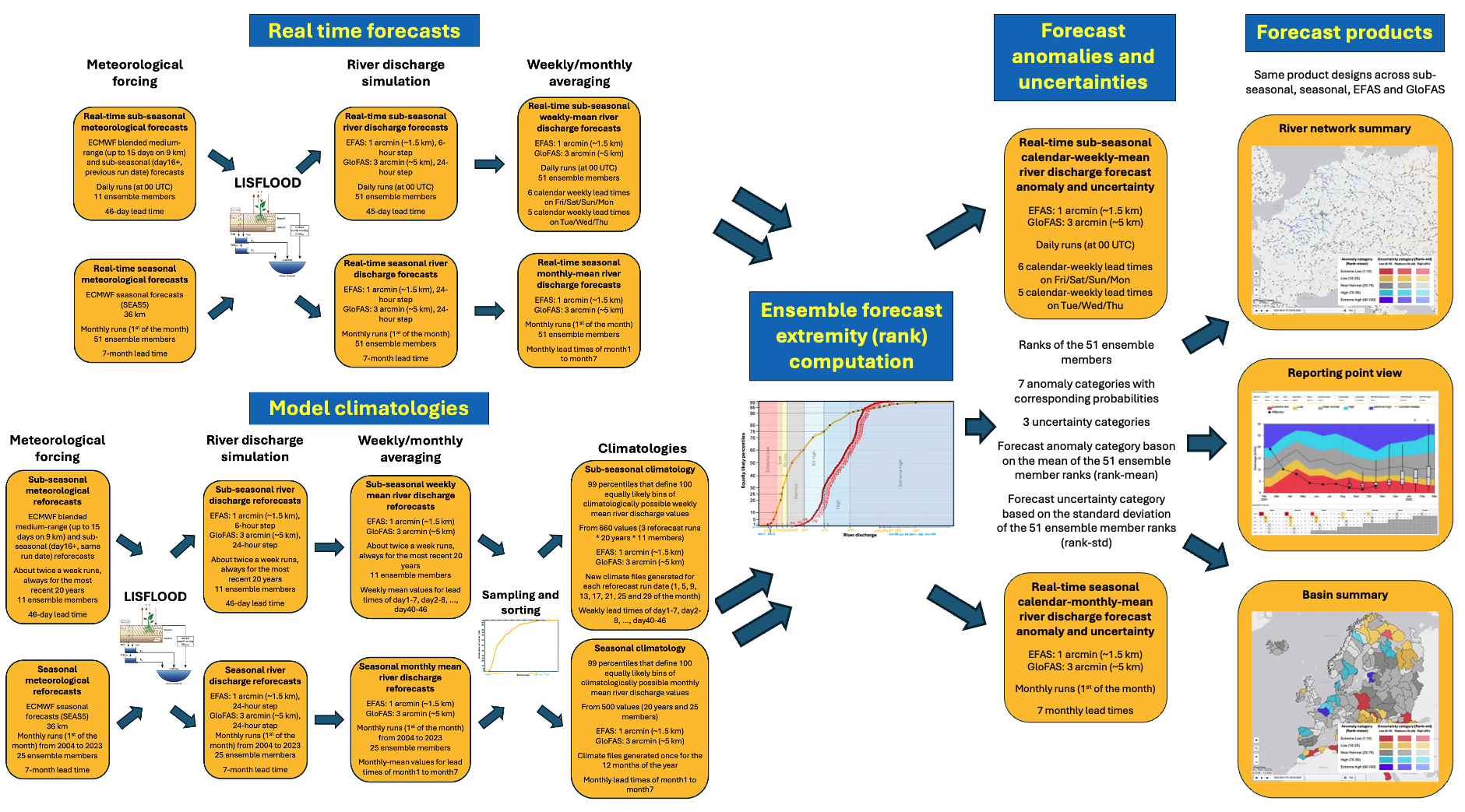...
The revised sub-seasonal products cover calendar week periods (i.e. always Monday-Sunday), while the seasonal products are valid for whole calendar month periods as lead time. The forecast signal is derived from the relationship between the 'forecast-lead-time-averaged-river-discharge' (i.e. calendar week average or calendar month average) and the climatological distribution of the same weekly- or monthly-mean values. While this naturally works for the calendar months, the fixed calendar week lead times in the sub-seasonal will allow the users to directly compare forecasts from different runs, as the verification period is fixed onto the calendar weeks. So, the evolution of the subsequent daily sub-seasonal forecast runs (always at 00 UTC) can be monitored by looking at the exact same verification period.
The generation
Figure 1. Flowchart of the sub-seasonal and seasonal products rely on three major components, listed below:anomaly and uncertainty information generaiton methodology.
Component-1. Real time forecasts
...

